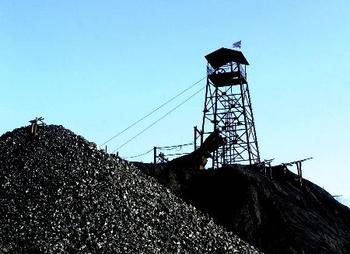 It is reported that in the first four months of this year, the country’s total coal production and coal investment in fixed assets presented “two negative growthâ€: In the first four months, the national coal output was 1.15 billion tons, a year-on-year decrease of 23 million tons or a drop of 2%; Coal investment decreased by 6.6% year-on-year.
It is reported that in the first four months of this year, the country’s total coal production and coal investment in fixed assets presented “two negative growthâ€: In the first four months, the national coal output was 1.15 billion tons, a year-on-year decrease of 23 million tons or a drop of 2%; Coal investment decreased by 6.6% year-on-year. Wang Xianzheng, president of the China Coal Industry Association, said that since the beginning of last year, the national coal economy has undergone major changes, coal demand has slowed down, the economic efficiency of enterprises has declined, and some companies have suffered losses. In addition to the "two negative growths" in total production and investment in fixed assets, the coal economy has also exhibited "two highs" and "two declines."
The “two highs†means: First, the coal stocks in the entire society remain high. At present, the total social coal inventory is 292 million tons, which is about 150 million tons more than the normal social inventory. It is difficult to remove stocks. Second, the amount of imported coal has remained high. In the first four months, China imported 110 million tons of coal, a year-on-year increase of 25.6%, which has become increasingly prominent in the domestic market.
"Two declines" mean: First, the economic benefits of coal companies have fallen sharply. In the first quarter, the main business income of coal enterprises above the designated size decreased by 2.6% year-on-year, and profits dropped by 40.3% year-on-year. Some large-scale enterprise groups have suffered losses, and individual companies have experienced ** wages and delayed wages. The second is the decline in coal prices.
In view of the current situation in the coal industry, Wang Xianzheng stated that it is necessary to improve the long-term stable supply support capability of coal throughout the country and pay close attention to the issue of coal restructuring. At the same time, it is necessary to pay close attention to the impact of coal economic downturn on coal mine safety, strengthen the sense of responsibility, increase the investigation and management of hazards such as gas and water hazards, and improve the safety and security capabilities.
Thin wall injection molding is a specialized form of conventional injection molding that focuses on mass-producing Plastic Parts that are thin and light so that material cost savings can be made and cycle times can be as short as possible. Shorter cycle times means higher productivity and lower costs per part.
The definition of thin wall is really about the size of the part compared to its wall thickness. For any particular plastic part, as the wall thickness reduces the harder it is to manufacture using the injection molding process. The size of a part puts a limit on how thin the wall thickness can be. For packaging containers thin wall means wall thicknesses that are less than 0.025 inch (0.62mm) with a flow length to wall thickness greater than 200.
The following industries make use of thin wall molding:
food packaging ( e.g. food containers and lids)
automotive (e.g. both structural and non-structural car parts)
mobile telecommunications (e.g. mobile phone housings)
medical (e.g. syringes)
computing equipment (e.g. computer housings)
Thinwall Injection Mold,Thinwall Mould Maker,Oem Injection Plastic,Plastic Parts
PF Mold Co., Ltd. , http://www.pf-mold.com
